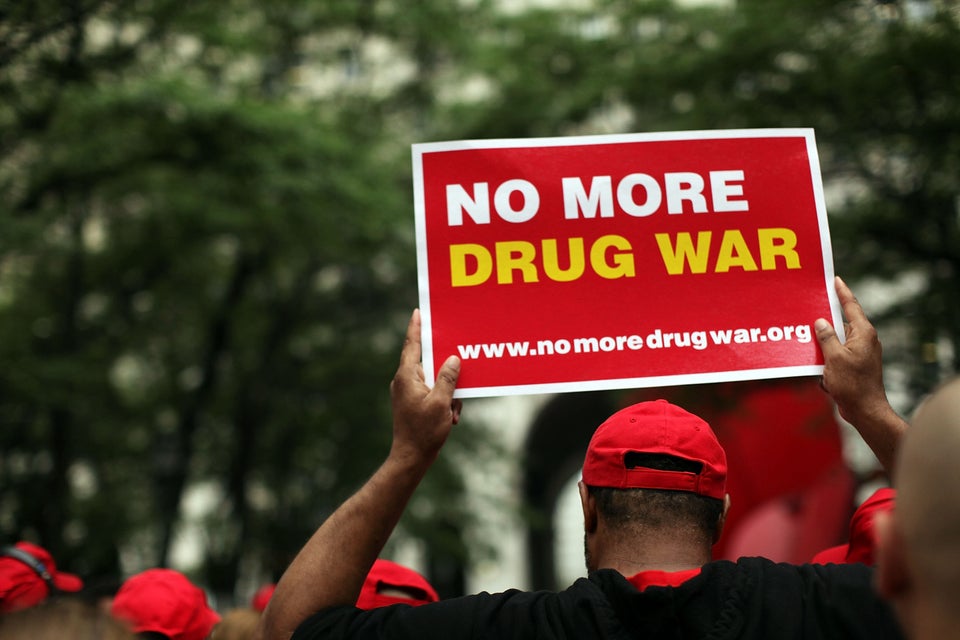The federal government announced Monday that it is prepared to spend tens of millions of dollars on marijuana research through the University of Mississippi, which houses the only federally legal cannabis garden in the United States.
The new contract, worth a maximum of $68.7 million over five years, was awarded by the National Institutes of Health Monday and posted to the Federal Business Opportunities website. The award is a renewal of a contract with the university that the federal government has held for more than 40 years.
In a statement provided to The Huffington Post, the National Institute on Drug Abuse, an arm of NIH that oversees the marijuana operation at Ole Miss, said, "To serve the research community, NIDA has tried to build farm capacity flexible enough to accommodate various levels of demand for research marijuana and marijuana products over the next five years."
NIDA is already obligated to spend $1.5 million on Ole Miss marijuana research for the 2015 fiscal year, the organization told HuffPost. And while the costliest possible scenario has the federal government spending close to $70 million on marijuana research, NIDA explained that demand at Ole Miss is currently low, and the feds expect they'll spend closer to $8 million over the five-year period unless demand increases.
Last year, Dr. Mahmoud ElSohly, the lead scientist at Ole Miss's marijuana lab, appeared to be getting ready for a large harvest, telling the Los Angeles Times that his team was preparing to grow 30,000 cannabis plants. But it's not clear how many plants the lab intends to cultivate in the coming year.
University of Mississippi researchers in the marijuana lab declined to comment to HuffPost on the federal award or the size of the plant garden in 2015.
The marijuana grown at Ole Miss is the only marijuana legally cultivated, processed and distributed by the federal government. Those crops are also the sole source of marijuana used in Food and Drug Administration-sanctioned research into the plant's medical potential. The university's Marijuana Research Project began in 1968, and the school has supplied medical marijuana to a small number of patients to treat various ailments under the banner of its New Drug program. The program was closed off to new patients in the early 1990s, and while there were as many as 30 patients receiving marijuana from the program at one point, as of 2014 there were only four patients still alive and receiving medical marijuana.
Critics contend that federal research efforts focus too much on the negative effects of the drug, rather than its potential medical benefits. The Drug Enforcement Administration, which must approve any potential researcher's license to handle and test the drug, has also been accused of obstructing research into the plant.
However, a bill recently introduced in Congress aims to break up the federal government's marijuana monopoly by allowing additional research facilities to grow the plant. The bill, known as the CARERS Act, would also reclassify marijuana as a less dangerous substance, which could make research easier.
In a 2014 call for research facilities, the federal government said that it was seeking a facility that could "cultivate and harvest, process, analyze, store, and distribute cannabis (marijuana) for research." The notice also said that researchers hoped to "extract cannabis to produce pure and standardized cannabis extracts" containing various concentrations of THC (the main psychoactive ingredient found in marijuana), CBD (a non-psychoactive compound) and other cannabinoids.
The government said that it was interested in a facility that would "develop new methods for growing cannabis plants containing high THC, low CBD; high CBD, low THC; and equal strength of CBD and THC."
A number of studies in recent years have shown the medical and public health potential of cannabis. Purified forms may attack some forms of aggressive cancer, and marijuana use has been tied to better blood sugar control and may help slow the spread of HIV. One study found that legalization of the plant for medical purposes might even lead to lower suicide rates.
To date, 23 states have legalized marijuana for medical purposes and another 12 have legalized the limited medical use of low-THC strains of marijuana. Four states, along with Washington, D.C., have legalized recreational marijuana, and 19 states have decriminalized the possession of small amounts of the plant.
Still, under federal law marijuana remains illegal and classified as a Schedule I drug, meaning it's considered one of the "most dangerous" substances "with no currently accepted medical use."

